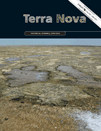
TERRA NOVA
Scope & Guideline
Leading the Way in Earth and Planetary Science
Introduction
Aims and Scopes
- Tectonics and Structural Geology:
The journal emphasizes studies related to tectonic processes, including faulting, folding, and crustal deformation, providing insights into the dynamics of Earth's lithosphere. - Geochronology and Radiometric Dating:
Research involving U-Pb, Ar-Ar, and other radiometric dating methods is a core focus, contributing to understanding the timing and duration of geological events. - Sedimentology and Stratigraphy:
Papers addressing sedimentary processes, depositional environments, and stratigraphic evolution are prevalent, enhancing knowledge of Earth's geological history. - Volcanology and Magmatism:
The journal covers research on volcanic activity, magma formation, and the geochemical processes involved in volcanism, providing insights into the behavior of volcanic systems. - Paleoenvironmental Reconstruction:
Studies that reconstruct past environments using various geological and paleontological methods are a key component, helping to elucidate historical climate and ecological changes. - Geophysical Methods and Modelling:
The application of geophysical techniques to understand subsurface structures and processes is a significant area of interest, bridging field data with theoretical models.
Trending and Emerging
- Advanced Geochronological Techniques:
There is a notable increase in the application of innovative geochronological methods, such as in-situ U-Pb dating, which allow for more precise dating of geological materials and events. - Climate Change and Environmental Impact Studies:
Research linking geological processes with climate change, particularly regarding sedimentary records and paleoenvironmental changes, has gained traction, reflecting a broader interest in understanding human impacts on geological systems. - Geophysical Imaging and Monitoring Techniques:
Emerging themes include the use of advanced geophysical methods, such as seismic tomography and InSAR, to monitor active geological processes and understand subsurface structures in real-time. - Fluid Dynamics in Geological Systems:
Studies investigating the role of fluids in geological processes, such as magmatism and deformation, are increasingly common, indicating a trend toward understanding the interactions between fluids and solid Earth. - Integrated Earth Science Approaches:
Papers that combine multiple disciplines, such as geology, geophysics, and geochemistry, are on the rise, reflecting a shift towards holistic approaches in understanding complex geological phenomena.
Declining or Waning
- Paleontology and Biostratigraphy:
Research related to paleontological studies and biostratigraphic frameworks appears to be diminishing, possibly as the focus shifts towards more geologically driven studies. - Geological Hazards and Risk Assessment:
Though still relevant, papers specifically addressing geological hazards and risk assessments have decreased in frequency, suggesting a potential shift towards more fundamental geological research. - Geomorphology and Landform Studies:
The exploration of landforms and geomorphological processes has become less prominent, indicating a reduced emphasis on landscape evolution in favor of subsurface geological processes.
Similar Journals
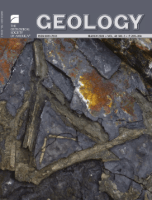
GEOLOGY
Leading the Way in Geology Research ExcellenceGEOLOGY, published by the Geological Society of America, Inc, is a premier journal dedicated to advancing knowledge, research, and discussion in the field of geology. With an ISSN of 0091-7613 and an E-ISSN of 1943-2682, this journal stands out with an impressive Q1 ranking in Geology for 2023, positioning it among the top journals in the realm of Earth and Planetary Sciences, specifically holding a remarkable rank of 11 out of 321, reflecting its 96th percentile status. This journal aims to publish innovative research articles that cover all aspects of geology, from tectonics and sedimentology to paleontology and mineralogy, offering invaluable insights for researchers, professionals, and students alike. Although not currently open access, GEOLOGY maintains a rigorous review process ensuring the quality and integrity of the research it publishes. For more than five decades, spanning from its inception in 1973 to the upcoming publications in 2024, GEOLOGY has been instrumental in shaping the geological discourse and continues to be a vital resource for the scientific community.

GEOLOGICAL QUARTERLY
Advancing Geological Knowledge for a Sustainable Future.GEOLOGICAL QUARTERLY, published by the Polish Geological Institute, is a respected journal in the field of geology, offering insights into Earth and planetary sciences since its inception in 2000. With an ISSN of 1641-7291 and an E-ISSN of 2082-5099, this journal serves as a vital platform for researchers, professionals, and students seeking to expand their knowledge in geological disciplines. The journal is positioned in Q3 within the geology category as of 2023 and ranks #172 out of 321 in Scopus, placing it in the 46th percentile among its peers. Although currently not an open-access publication, GEOLOGICAL QUARTERLY reflects the policy of fostering scientific communication and collaboration by disseminating valuable geological research. Its commitment to publishing original articles, reviews, and technical notes ensures that it plays a significant role in advancing geological science and its applications within the academic community. With its base in Warsaw, Poland, the journal stands as an important resource for anyone engaged in or studying the Earth sciences.
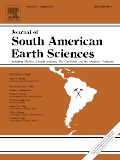
JOURNAL OF SOUTH AMERICAN EARTH SCIENCES
Bridging Disciplines in Earth and Planetary SciencesJOURNAL OF SOUTH AMERICAN EARTH SCIENCES is a premier interdisciplinary journal dedicated to publishing high-quality research in the fields of Earth-Surface Processes, Geology, and Paleontology, making it an essential resource for scientists and researchers focused on South American geology and its diverse geological phenomena. Published by Pergamon-Elsevier Science Ltd in the United Kingdom, this journal has been instrumental in disseminating groundbreaking studies since 1988, showcasing contributions that push the boundaries of knowledge in Earth and Planetary Sciences. With an impressive Scopus ranking—positioning it in the 74th percentile for Paleontology and 71st for Geology—this journal not only reflects robust academic quality but also its commitment to addressing critical geological challenges in South America. Researchers will appreciate its objective of advancing understanding of geological processes while providing insights into past, present, and future Earth environments. Although available through traditional subscription models, the journal's vast repository of articles enriches the academic landscape, facilitating the sharing of vital research among professionals, students, and geological practitioners.
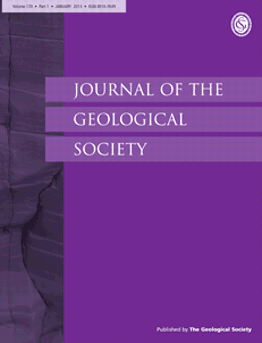
JOURNAL OF THE GEOLOGICAL SOCIETY
Navigating the Geological Landscape of KnowledgeJOURNAL OF THE GEOLOGICAL SOCIETY, published by GEOLOGICAL SOC PUBL HOUSE, is a premier academic journal dedicated to advancing the field of geology. With a rich history dating back to 1845 and continuously published until 2024, this journal caters to a diverse audience of researchers, professionals, and students involved in earth sciences. The journal is recognized for its high impact factor, situating it in the top Q1 category in the field of geology, as indicated by its impressive Scopus rank of #49 out of 321, positioning it at the 84th percentile in Earth and Planetary Sciences. This esteemed scholarly platform promotes rigorous peer-reviewed research, ensuring that novel findings contribute to the global geological discourse. Although it operates under a subscription model, the journal's archive offers valuable insights for anyone pursuing excellence in geological research. The JOURNAL OF THE GEOLOGICAL SOCIETY stands as a vital resource for disseminating scientific knowledge and fostering educational growth within the field.

INTERNATIONAL JOURNAL OF EARTH SCIENCES
Unveiling the Secrets of Our PlanetINTERNATIONAL JOURNAL OF EARTH SCIENCES, published by Springer, is a leading journal in the field of Earth and Planetary Sciences, distinguished by its Q1 quartile ranking in the 2023 category of Earth and Planetary Sciences (miscellaneous). With an ISSN of 1437-3254 and an E-ISSN of 1437-3262, this journal has been a pivotal platform for researchers, academics, and practitioners since its inception in 1996. The journal's focus encompasses a broad range of topics within Earth sciences, making it a vital resource for contributions that enhance our understanding of geological processes, climate change, and planetary dynamics. The impact factor reflects its high standards and the significance of the research it publishes, ranking it in the 74th percentile among its peers as per Scopus. Furthermore, the journal offers Open Access options, facilitating the global dissemination of groundbreaking research. The editorial team is committed to advancing knowledge in Earth sciences, serving as an essential reference for students and professionals looking to engage deeply with this dynamic field.

GEOLOGICAL MAGAZINE
Charting the Future of Geological InquiryGEOLOGICAL MAGAZINE, published by Cambridge University Press, is a premier journal in the field of geology, renowned for its rich legacy since 1864 and ongoing contributions to Earth and Planetary Sciences. With an impressive Q1 ranking in Geology and a Scopus rank of #70 out of 321 journals, it holds a significant position within the academic community, appealing to researchers, professionals, and students alike. The journal covers a wide array of topics, ensuring a comprehensive platform for the dissemination of cutting-edge geological research. Although it does not offer open access, it remains a vital resource for those seeking to stay abreast of advancements in the field. With an enduring commitment to quality, GEOLOGICAL MAGAZINE stands as an essential outlet for scholarly communication and serves as a catalyst for academic discourse within the geological sciences.

JOURNAL OF IBERIAN GEOLOGY
Pioneering research in the realm of Iberian geology.JOURNAL OF IBERIAN GEOLOGY, published by Springer International Publishing AG, is a pivotal platform dedicated to advancing the field of geology and stratigraphy. With an ISSN of 1698-6180 and E-ISSN of 1886-7995, this journal has earned its reputation in the academic community, holding a commendable Q2 ranking in both Geology and Stratigraphy for 2023, reflecting its contributions to contemporary geological research. Spanning from 2007 to 2024, it provides a comprehensive forum for scholars and practitioners from around the globe to disseminate their findings pertaining to the Iberian Peninsula, enhancing the understanding of regional geological phenomena. The journal has carved out a significant niche within the Earth and Planetary Sciences, ranking #137 out of 321 in Geology and #24 out of 55 in Stratigraphy, indicating its wide-reaching impact and scholarly engagement. The Journal of Iberian Geology serves as an indispensable resource for those interested in the complexities of geological structures, stratigraphic sequences, and the broader implications of geological research, making it a vital reference for researchers, professionals, and students alike.
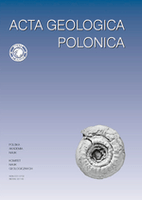
ACTA GEOLOGICA POLONICA
Unveiling Earth's secrets through rigorous scientific inquiry.ACTA GEOLOGICA POLONICA is a distinguished journal published by the Polska Akademia Nauk, in collaboration with the University of Warsaw's Geology Department. Since its inception, it has served as a vital platform for disseminating innovative research in the field of Geology, reflecting a commitment to advancing scientific knowledge in Earth and planetary sciences. With an ISSN of 0001-5709 and an E-ISSN of 2300-1887, this journal provides a rigorous review process and is classified in the Q3 quartile for Geology as of 2023, indicating its growing influence in the discipline. Despite not being open access, the journal facilitates meaningful contributions that span a range of geological topics from fundamental research to applied sciences, thereby enriching the academic landscape. Researchers, professionals, and students alike are encouraged to engage with the valuable findings and discussions contained within its pages, which continue to shape the future of geological inquiry.

OFIOLITI
Your Gateway to Cutting-Edge Geological DiscoveriesOFIOLITI is a prestigious journal dedicated to the field of geology, published by the Dipartimento di Scienze della Terra, Università di Firenze in Italy. With a notable history since its inception in 1978, the journal serves as a vital resource for researchers, professionals, and students seeking to explore and disseminate knowledge in Earth and Planetary Sciences. As a recognized publication with an impressive Q2 quartile ranking in the 2023 category of Geology and a Scopus rank of #155/321, OFIOLITI strives to promote innovative research and insights across a broad spectrum of geological studies. Although it currently does not offer open access, its commitment to high-quality peer-reviewed content ensures that each issue enriches the academic discourse and nurtures the scientific community's understanding of geological processes and phenomena. By bridging theoretical frameworks with practical applications, OFIOLITI plays an essential role in advancing scientific inquiry and education in geology.

GEOLOGICA CARPATHICA
Fostering Innovation in Geological ResearchGEOLOGICA CARPATHICA, with ISSN 1335-0552 and E-ISSN 1336-8052, is a distinguished open access journal published by the Slovak Academy of Sciences Geological Institute, serving as a pivotal platform for the dissemination of research in the field of Geology. Established in 1991 and continuing through 2024, the journal is recognized for its significant contributions to Earth and Planetary Sciences, evidenced by its 2023 Scopus ranking placing it in the second quartile (Q2) within Geology. With an H-index that showcases its impactful publications, GEOLOGICA CARPATHICA is committed to fostering scholarly communication while promoting accessible research, having adopted an open access model since 2009. Located in beautiful Bratislava, Slovakia, this journal aims to engage a global audience of researchers, professionals, and students interested in ecological, geological, and environmental studies, making it a prominent resource for enriching the scientific community's understanding of the Carpathian region and beyond.